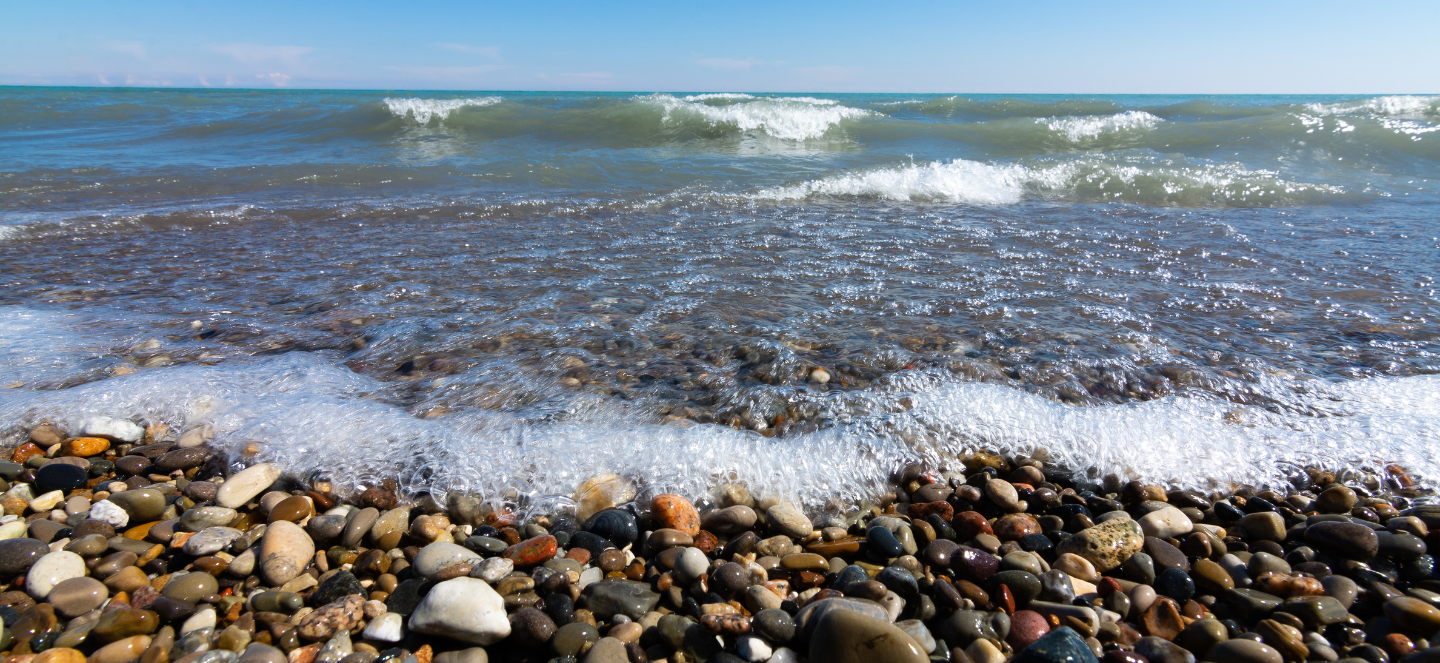Included in the July 24, 2025, biweekly update
This week's articles by MSU faculty, specialists and students making a difference feature coastal resilience in the Great Lakes, phosphorus runoff from farm fields, and climate benefits of regenerative agriculture.
Dynamic coasts, resilient futures: Navigating changes in the Great Lakes
Meadows et al. (2025) explore how coastal areas around the Great Lakes are being reshaped by a combination of natural processes and human impacts. Their research outlines key drivers of change, including fluctuating lake levels, shoreline erosion, infrastructure vulnerability, and shifts in sediment and ice patterns.
Instead of focusing on one discipline, the researchers emphasize the need for coastal research that brings together hydrodynamics, engineering, ecology, and community planning. They highlight examples of place-based efforts that integrate scientific modeling with local knowledge and decision-making. These collaborative approaches, the researchers argue, are essential for communities trying to adapt to unpredictable shoreline conditions caused by climate change and human influences.
Meadows et al. (2025) present coastal resilience as not only a scientific or engineering challenge, but a social and environmental one. They encourage the use of flexible, adaptive strategies that work with natural systems rather than trying to control or override them.
Meadows, L. A., Theuerkauf, E., Troy, C., Xue, P., Meadows, G., & Wu, C. (2025). “Dynamic coasts, resilient futures: Navigating changes in the Great Lakes.” Journal of Great Lakes Research. https://doi.org/10.1016/j.jglr.2024.12.010
Corresponding author: Lorelle A. Meadows, lmeadows@mtu.edu.
Contribution of new and old Phosphorus from Organic and Inorganic Fertilizers in Subsurface-drained Fields Using Machine Learning
Aniekwensi and Ghane (2025) used a machine learning approach to investigate how much “new” phosphorus (recently applied fertilizer) versus “legacy” phosphorus (leftover from previous applications) contributes to phosphorus (P) losses in subsurface-drained farm fields. Their research compared two fields in southeast Michigan, one receiving organic fertilizer and one using inorganic fertilizer.
The researchers developed a modified regression model called Weighted Regression on Discharge and Seasons (WRDS) to better predict how phosphorus moves through drainage. The model showed strong predictive accuracy, especially when separating high-flow events from normal drainage.
At the organic site, new phosphorus contributed 16.3% of total phosphorus loss and 20.6% of dissolved reactive phosphorus (DRP). At the inorganic site, new phosphorus made up just 2.9% of total P and 0% of DRP losses. Timing was important: manure applied in December and January led to the highest P losses, while fall applications resulted in less runoff. The researchers found that legacy phosphorus remained the dominant contributor overall, particularly at the inorganic site.
These results suggest that managing fertilizer timing and understanding local drainage dynamics are key to reducing phosphorus runoff. Machine learning can also help pinpoint when and where nutrient losses are most likely to occur.
Aniekwensi, E., & Ghane, E. (2025). “Contribution of new and old phosphorus from organic and inorganic fertilizers in subsurface-drained fields using machine learning.” Journal of Great Lakes Research. https://doi.org/10.1016/j.jglr.2025.06.012
Corresponding author: Ehsan Ghane ghane@msu.edu.
A multi model ensemble reveals net climate benefits from regenerative practices in US Midwest croplands
Basso et al. (2025) used a multi-model ensemble, combining nine agricultural simulation models, to assess the climate impact of regenerative farming practices in U.S. Midwest croplands. The researchers evaluated no-till, cover cropping, and a combination of both within a corn-soybean rotation system.
Results showed that these practices increased soil carbon storage by 0.2 to 0.5 metric tons per hectare per year and reduced net greenhouse gas emissions by 25 to 60 percent over a 15-year period compared to conventional farming. The most significant reductions occurred when no-till and cover cropping were used together.
The consistency of results across models and locations strengthened the findings. The researchers also conducted an uncertainty analysis to evaluate how reliable the predictions were under different environmental and climate scenarios.
Basso et al. (2025) demonstrate that regenerative practices can reduce agriculture’s climate footprint while maintaining crop productivity. By combining long-term field data with advanced modeling, the researchers show that farming systems in the Midwest can contribute meaningfully to climate mitigation through soil-based carbon storage.
Basso, B., Tadiello, T., Millar, N., et al. (2025). “A multi model ensemble reveals net climate benefits from regenerative practices in US Midwest croplands.” Scientific Reports, 15, 12345. https://doi.org/10.1038/s41598-025-08419-y
Corresponding authors: Bruno Basso (basso@msu.edu) and Tommaso Tadiello (tadiello@msu.edu).

